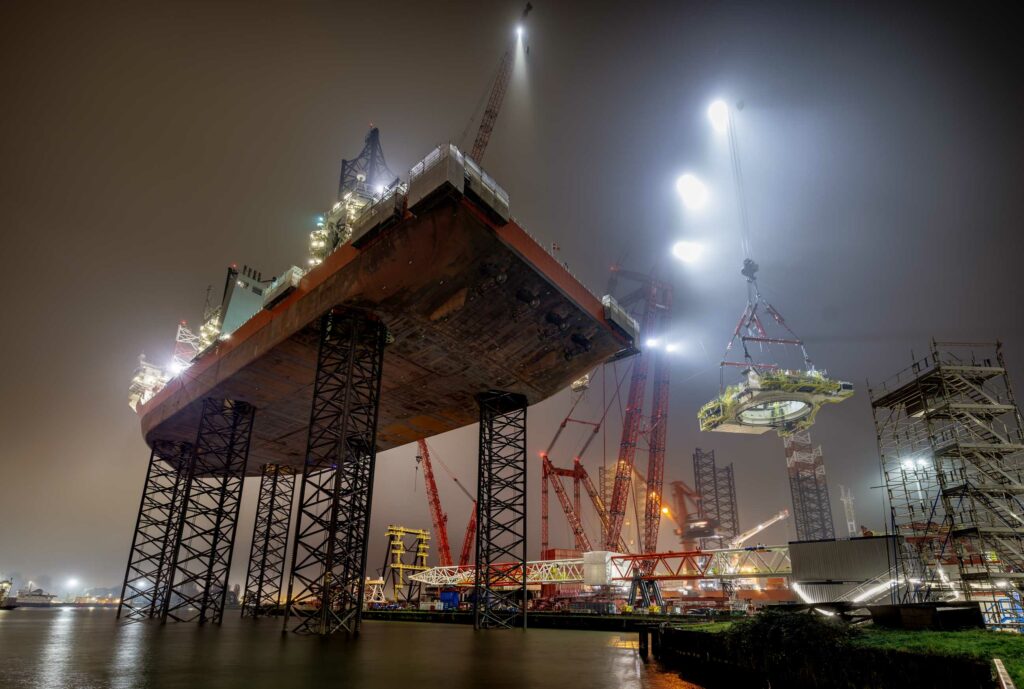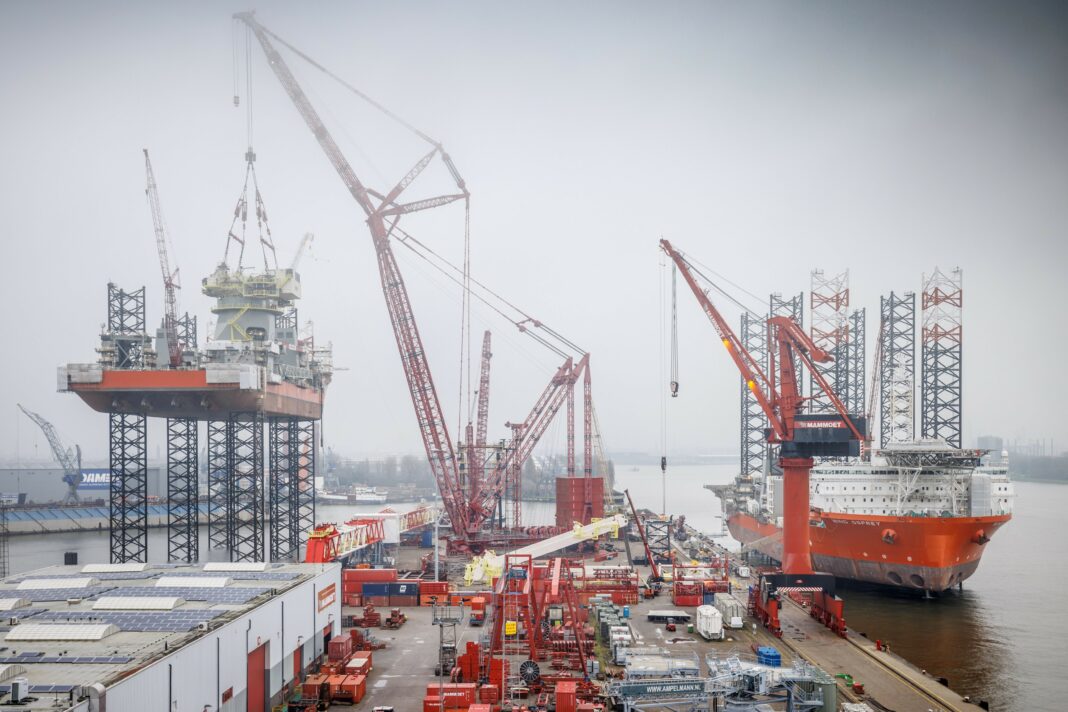When it comes to wind turbines, the bigger they are, the harder they work, generating more renewable offshore wind energy, and a greater return on investment for developers.
As a result, next-gen turbines are growing, and their components are getting larger and heavier.
To meet the enhanced installation and maintenance requirements of their components, the equipment used to move, lift and install them must be upgraded and replaced.
So, Mammoet was contracted by GustoMSC to carry out leg crane replacements on two offshore wind farm installation jack-up vessels (Wind Orca and Wind Osprey) for the Danish transport and installation company Cadeler.
The new leg cranes are fully electrically driven and have a 1,600t lifting capacity, making them ready to install and service next-generation wind turbines with capacity ratings exceeding 14MW.
This project represented a unique one for Mammoet, utilizing not only one of the biggest cranes in its fleet but also its own yard in Schiedam to perform the job – the location allowing a rare opportunity to schedule projects simultaneously to greatly increase their efficiency.
For the project, Mammoet utilized its PTC210-DS crane, one of five 5000t class ring cranes in its fleet and one of the largest cranes in the world.
The colossal size and stature of the crane belie its greatest strengths – its versatility and ability to operate in areas where space is limited.
Dirk Knoester, Senior Adviser at Mammoet, explained:
“The PTC210-DS is the perfect crane for this job. It has a relatively small footprint combined with 360-degree slewing, with the possibility to switch between fixed and luffing jib mode (as only the PTCs can) resulting in the largest possible working area.
“PTC cranes can also be assembled in numerous configurations and thus a tailor-made configuration is feasible for any job: different mainboom and jib lengths, fixed or luffing jib, different amounts of counterweight and two ring diameters.”
With Wind Orca and Wind Osprey moored on opposite sides of the quay, the PTC210-DS could be positioned in the center, slotted between both vessels.
Safety assessments were carried out at the start of the project. This was essential as surveys found that the dock itself consisted of two L-shaped concrete constructions with softer ground in the middle.
A soil survey was conducted at the proposed location of ring crane and, using this data, calculation models were created to predict the settlement of the soil under its weight.
The new leg cranes comprised four main sections to be installed: the pedestal, the rotating platform, the A-Frame and the 149m mainboom.
To enhance stability and control during the mainboom lifts, an LR1800-1.0 crawler crane was used as an assist crane. Working together, the PTC210-DS lifted one end of the boom as the crawler crane lifted the other.



